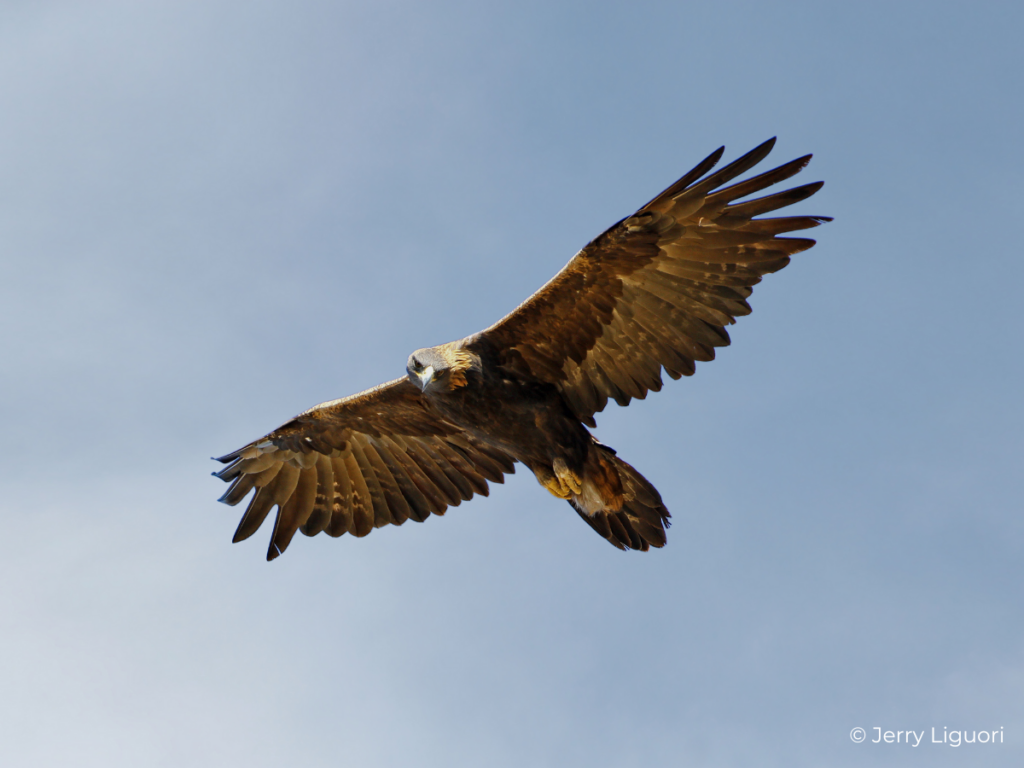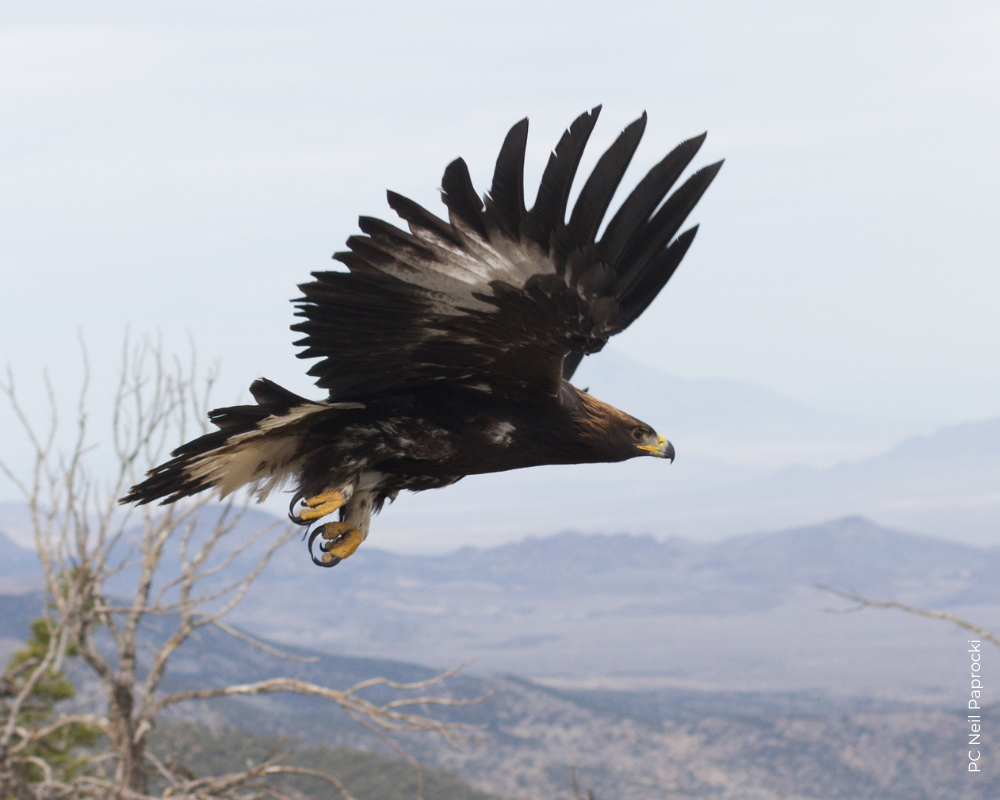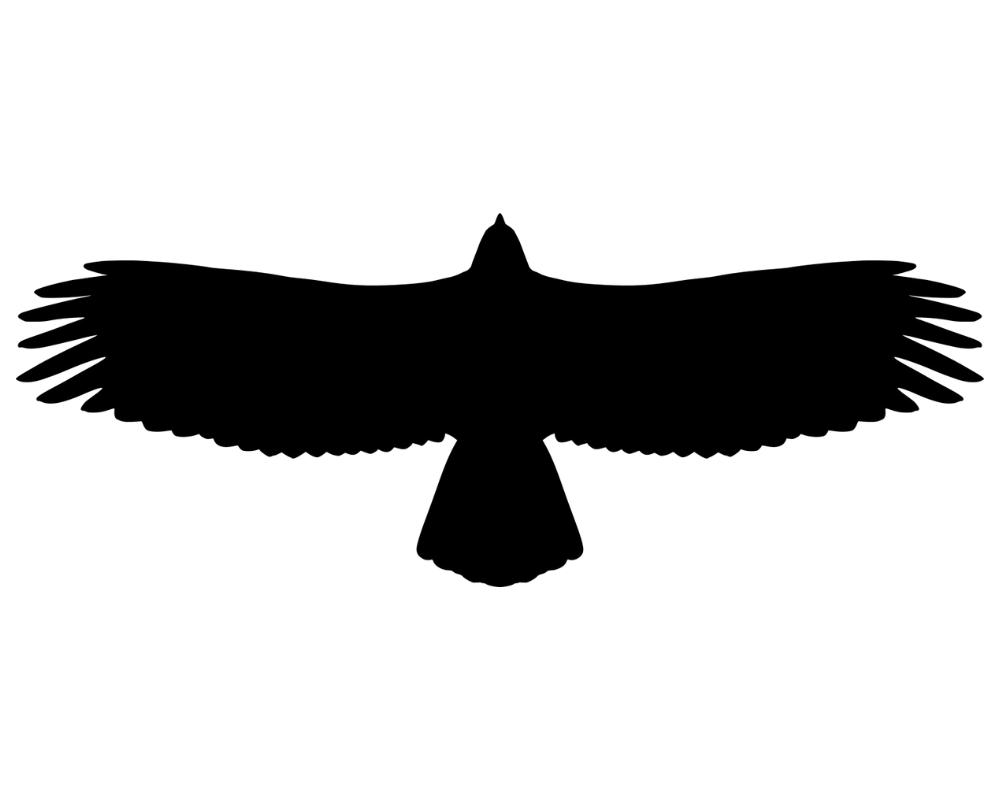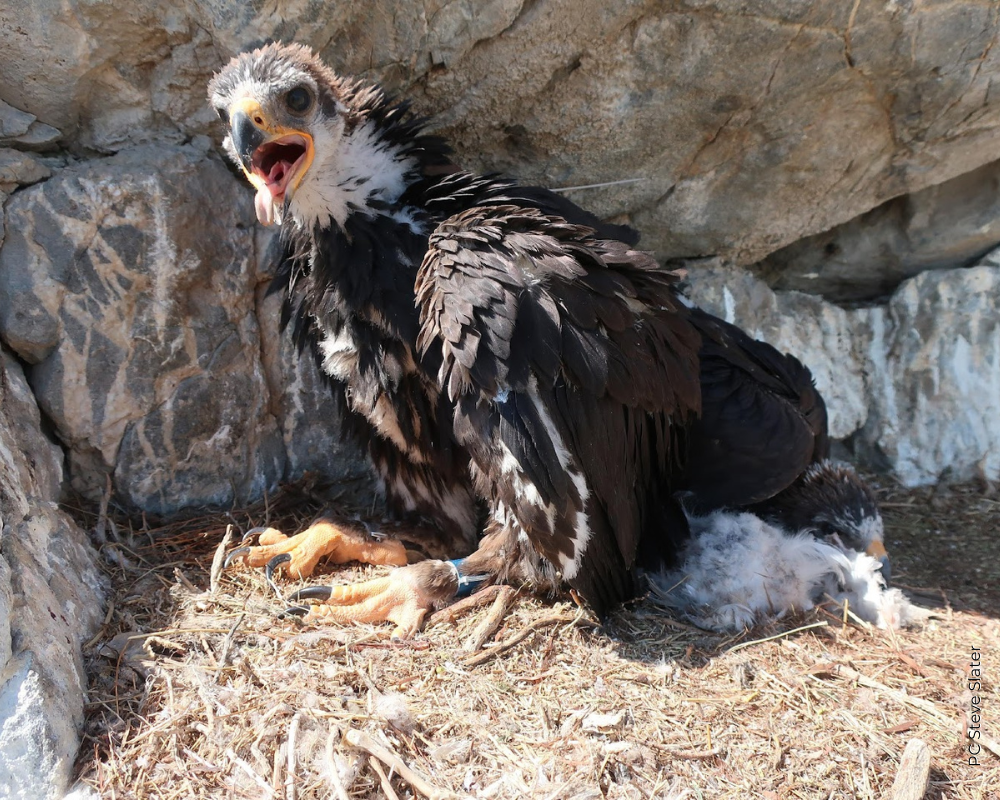Overview
Golden Eagles are large birds, about the same size as Bald Eagle, and considerably larger than both North American vultures. They are found throughout the West in grasslands, sagebrush, and semi-open clearings in mountainous terrain. The breeding range extends from Alaska through the western United States and from Quebec to northern Newfoundland and Labrador in the East, where they are much less common. They nest almost exclusively on cliffs but sometimes in large trees or on transmission structures. Golden Eagles are solitary, found alone or in pairs, but never in large groups like Bald Eagle. They are highly territorial, maintaining a home range of several square miles, and have even killed smaller raptors that trespass, leaving them for vultures and coyotes to scavenge. They are aggressive towards intruding eagles and escort them from their territory, even outside the breeding season.
Golden Eagles prey mostly on medium-sized mammals (especially jackrabbits), but are capable of catching large mammals (even foxes) and birds (e.g., grouse, ptarmigan), which they hunt through a variety of tactics, including low-level surprise-and-flush techniques, perch-hunting, and high elevation aerial stoops. It has been said that a Golden Eagle can stoop almost as swiftly as a Peregrine Falcon! Mated pairs will also hunt as a team, as one bird flushes prey out of hiding and the other unexpectedly overtakes it from another direction. Unlike Bald Eagles, Golden Eagles do not seek out carrion but will feed on dead things if the opportunity arises. Females are notably larger than males when the two are side-by-side. During courtship or when agitated, they give a shrill “seeachup, seeachup.”
Ageing Golden Eagles to a specific year in the field can be difficult. Beginning birders assume that birds with white in the wings are juveniles and birds with none are adults. However, some juveniles lack white in the wings altogether, and birds as old as four years can show obvious white in the wings. Ideal views of the tail pattern are often needed to age Golden Eagles accurately, and without this, many Golden Eagles (especially birds gliding overhead) remain unknown age.




